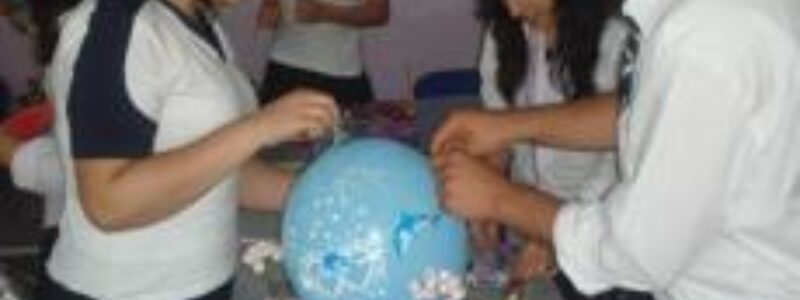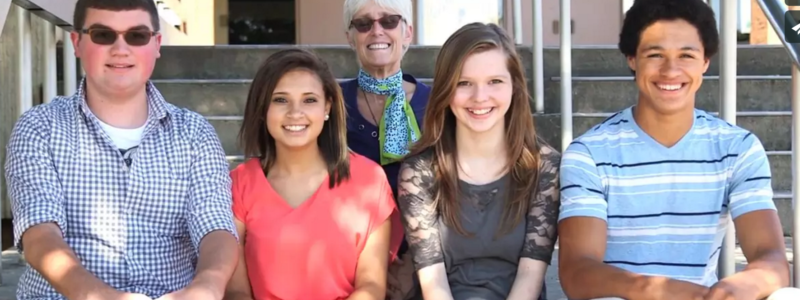Get to Know Others
Get to Know Others Project Description
Teacher goals:
- Provide students with ongoing vast opportunities to communicate and learn about their culture and identity, and to be able to make comparisons of the differences and similarities about other cultures around the globe.
- Expose students to globalization by integrating technology as a vehicle that will enable them to have an appreciation and understanding about their own culture and other ways of life around the globe.
Student goals:
- To be able to communicate effectively in the English language with children from different parts of the world.
- Children will explore their own identity, language, culture and traditions with children around the world.
- Use research skills by integrating technology as a mind tool to explore and understand their own identity and other ways of life, by sharing with others thru videos, blogs, images, Skype and e-mails.
Curriculum Standards:
Content Standards and Grade Level Expectations of the English Program 2007
Listening/Speaking:
- The student uses the English language to interpret oral input, construct meaning, interact with confidence both verbally and nonverbally, and express ideas effectively in a variety of personal, social, and academic contexts.
- L/S.4.3 Listens and responds to complex instructions, complete statements, and answers and formulates the 5 W-Questions as well as how questions (who, what, when, where, why, and how) in formal and informal discussions.
- L/S.5.3 Listens, responds to, and analyzes complex instructions; expresses him or herself using complete sentences; answers and formulates both closed and open-ended questions in both formal and informal scenarios.
Writing:
- The student effectively communicates to a variety of audiences in all forms of writing through the use of the writing process, proper grammar, and age appropriate expressive vocabulary.
- W.4.5 Follows the writing process; applies prewriting strategies to generate ideas; uses the dictionary as an aid in the writing process; identifies spelling errors in writing.
- W.5.5 Follows the writing process; applies prewriting strategies to generate ideas; uses the dictionary as an aid in the writing process; identifies spelling, capitalization, and ending punctuation errors.
Technology Standards:
http://www.iste.org/standards/nets-for-students.aspx
- 2 Communication and collaboration: Students use digital media and environments to communicate and work collaboratively, including at a distance, to support individual learning and contribute to the learning of the others.
- 5 Digital Citizenship: students understand human, cultural, and societal issues related to technology and practice legal and ethical behavior.
Common Core State Standards
Writing 2 - Write informative/explanatory texts to examine and convey complex ideas and information clearly and accurately through the effective selections, organization, and analysis of content.
Writing 4 - Produce Clearn and coherent writing in which the development, organization, and style are appropriate to task, purpose, and audience.
Writing 5 Develop and strengthen writing as needed by planning, revising, editing, and rewriting, or trying a new approach.
Writing 7 - Conduct short as well as more sustained research projects based on focused questions, demonstrating understanding of the subject under investigation.
Writing 6 - Use technology, including the Internet, to produce and publish writing and to interact and collaborate with others.
Speaking and Listening 1- Prepare or and participate effectively in a range of conversations and collaborations with diverse partners, building on others’ ideas and expressing their own clearly and persuasively
Speaking and Listening 4 - Present information, findings and supporting evidence such that listeners can follow the line of reasoning and the organization, development, and style are appropriate to task, purpose, and audience.
Language 1 - Demonstrate command of the conventions of standard English grammar and usage when writing or speaking.
Language 2 - Demonstrate command of the conventions of standard English capitalization, punctuation, and spelling when writing.
Timetable and Specific Lessons
Timetable:
We will be participating in our chosen project for 4 weeks. We will be meeting two periods per week on Fridays. Students will be accessing and responding to emails, making video-conferences, blogging with iEARN project participants. Two additional periods per week will be added during which students will be provided with ongoing training on the use of video conferencing, digital pictures, scanning, video clips, and any other related material to our project. During the four weeks of the project we will also select a date for a field trip to a historical landmark called “El Morro” in San Juan, Puerto Rico which will be shared online with our collaborating class through video clips, photos and writing pieces.
Specific Lesson:
Lesson 1: Introduction to the Get to Know Others iEARN Project
We will introduce the iEARN Project Get to Know Others by accessing the videos clips provided on the website. A short Power Point presentation of the purpose and goals of our project will be presented to the participants. Students will define iEARN and explain their participation and views on global collaboration. In this project “Get to Know Others”, students study their own culture, traditions, and ways of life; and make comparisons of their culture and other cultures to find similarities and differences. This project will awaken in our students their desire and motivation to communicate orally and in written form with other children around the globe.
Lesson 2: Getting to know Others
A large percentage of our school population comes from surrounding islands such as Dominican Republic, Haiti, Cuba, and Virgin Islands. Also, other children come from countries such as Peru, Morocco, Venezuela, and Mexico. The purpose of our second lesson will be for students to discover and learn about their background, family, culture, traditions, language “dialects”, and values. This information was assigned to the students to bring to class in the previous lesson. They will be creating a collage with pictures about their heritage, and will be sharing their interviews to their parents or any other family member. Their collages will be exhibited in the classroom and shared with other participants of the project. In addition the students will also bring typical food of their countries and music. This activity will help develop the student’s oral communication skills in the second language ‘English’ and proper interpersonal relationship with peers.
For us teachers, it’s extremely important for our students to understand, value, and communicate their heritage and cultural background with others. By doing this, they will develop a better appreciation and understanding for their culture and other cultures around the world.
Lesson 3: Preparing our visit to a Historical Landmark "El Morro”
(Three meetings for 50 minutes)
Activities
In this lesson students will discover, understand and show appreciation for their identity, cultural heritage, and historical landmarks. They will be sharing their culture and ways of life with others using technology as a mind tool. Students will learn about the importance and benefits of the use and integration of technology. They will be instructed on how to use digital cameras, how to make short video clips, and how to upload them into the computer. They will be sharing these videos with others thru e-mail and blogging. Also, they will take tutorials on how to use software programs such as SKYPE and Messenger. Our students will experience a personal firsthand online communication by collaborating with children from other countries, and discover the similarities and differences of their culture and other ways of life.
Students will take a fieldtrip to visit an historical landmark in Old San Juan, PR. They will make video clips, take digital pictures, make interviews, and write about their experiences in their journals. Students will share globally these digital resources (videos, photographs, audio interviews) with others online. They will acquire and learn important technological skills by learning how to follow the process of editing, changing and improving their final digital product before shared with others online. Another oral and writing skill introduced in this lesson will be the art of making interviews. They will learn about different types of sentences and how to construct proper questions.
Lesson 4: Online Global Collaboration
Students will collaborate with other countries by sharing their interviews, by posting informative audio video clips, and by meeting online with other students to share their experiences in a real lively setting. They will communicate thru SKYPE and Messenger to exchange ideas, beliefs and ways of life with others in a more personal way. They will develop a sense for collaboration and learn from each other’s culture.
One important skill in this lesson is to teach students how to search on the World Wide Web. This lesson will provide students information regarding net etiquette, and the importance of following the guidelines and regulations for proper use of the World Wide Web.
Assessment:
As an initial assessment students will complete a questionnaire (open and closed questions) on their knowledge on the use of technology and digital resources (videos, digital cameras, internet, and software).
Promote class discussions among teacher and students about their work. (Class discussions, student’s completion of checklists and rubrics to evaluate if students met the criteria’s for the proper elaboration of Video clips, Digital pictures and Interviews).
Students complete journal entries about their experiences and knowledge acquired during mini lessons on the use of digital tools, and how they applied this knowledge to their collaborative project. Students complete a self-revise checklist.
Class presentations, observations, conversations with teachers and group members, and teacher responses to journal entries, all give students valuable feedback to help them plan their next step.
Listening/Speaking
1. Students create audio video clips to inform others about the historical landmark “El Morro.
2. Students will communicate effectively in their second language.
3. Students make interviews to knowledgeable people to elicit information about their culture, identity and historical heritage.
4. Online collaboration thru SKYPE
Writing
1. Journal entries
2. Online collaboration thru Messenger, e-mails, and blogs
3. Performing interviews
4. Write reflections about their participation and experiences in the iEARN project
Technology
1. Research reliable information from the World Wide Web.
2. Recognize the guidelines and regulations for the proper use of the World Wide Web.
3. Integrate technology as a mind tool to explore and understand their own identity and other ways of life, by sharing with others thru videos, blogs, images, Skype and e-mails.
Conclusion of Activity
Students will draw their project to a conclusion by divulging and exposing to others their collaborative experiences and participation in the iEARN project. They will invite students from different grade levels, parents, school staff and local community representatives to talk about their cognitive and social achievements, their interests in continuing to participate in the project, and inviting others to join in this global social collaboration. Their main objective of this activity is to provide an awareness of the importance and benefits for educators and students to participate and contribute in this global collaborative project. Follow the motto: Think globally, act locally.






